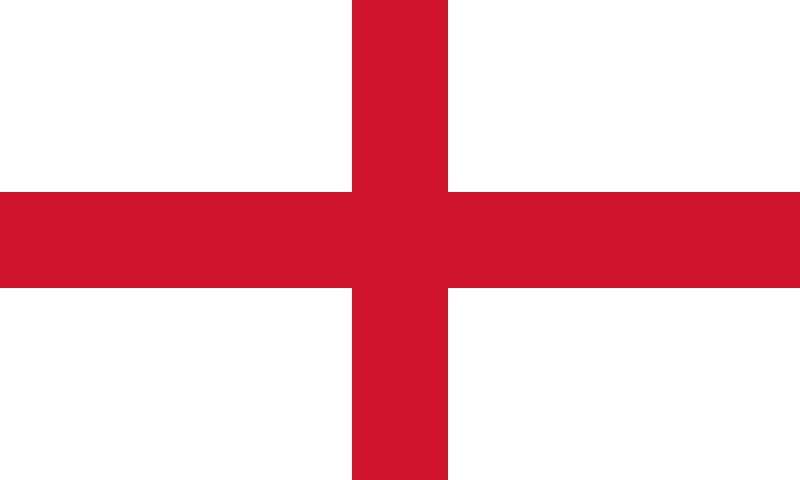 |
 |
 |
 |
 |
 |
BATTAGLIA NAVALE DI BARFLEUR
NAVAL BATTLE OF BARFLEUR
(29 MAGGIO - 02 GIUGNO 1692)
LA PIU' GRANDE BATTAGLIA NAVALE DELLA STORIA
|
|
I PROTAGONISTI
THE PROTAGONISTS
|
HMS ROYAL SOVEREIGN (1637 - 1697) Vascello a 3 ponti da 100 cannoni |
||||||||||||||||||||||||||||||||||||||||||||||||||||||||||||||||||||||||||||||||||||||||||||||||||||||||||||||||||||||
|
|
|||||||||||||||||||||||||||||||||||||||||||||||||||||||||||||||||||||||||||||||||||||||||||||||||||||||||||||||||||||
 |
 |
|||||||||||||||||||||||||||||||||||||||||||||||||||||||||||||||||||||||||||||||||||||||||||||||||||||||||||||||||||||
| ROYAL SOVEREIGN 1 | ROYAL SOVEREIGN 2 | |||||||||||||||||||||||||||||||||||||||||||||||||||||||||||||||||||||||||||||||||||||||||||||||||||||||||||||||||||||
| STORIA | HISTORY | |||||||||||||||||||||||||||||||||||||||||||||||||||||||||||||||||||||||||||||||||||||||||||||||||||||||||||||||||||||
|
La HMS Sovereign fu ordinata ad agosto 1634 su
iniziativa personale di Charleo I di Inghilterra che desiderava una Nave
Grande e gigante. La decisione provocò molta opposizione dalla Trinity
House. Ma il Re superò le obiezioni con l'aiuto di John Pennington e da maggio 1635 lei fu costruita da Pietro Pett (più tardi un Commissario della Marina militare), sotto la guida del suo padre Phineas, lo shipwright del padrone del re, e fu lanciato al dockyard di Woolwich 13 ottobre 1637. Come il secondo tre-adorn• di prima categoria (il primo tre-decker essendo Principe Reale di 1610), fu il predecessore della Victory di Nelson, anche se alla Reenge costruita nel 1577 da Mathew Panettiere fu l'inspirazione che offrì l'innovazione di un solo ponte dedicata completamente a cannoni di fiancata. Fu una nave da guerra stravagantemente decorata nella Marina militare Reale, completamente adornata da poppa per inarcare con intagli dorati contro un sfondo nero fatta da John Christmas e Mathias Christmas dopo un disegno da Anthony furgone Dyck. I soldi speso creazione lei, £65,586 aiutarono a creare la crisi finanziaria per Charles io quello contribuì alla Guerra Civile inglese. Charles aveva imposto una tassa speciale, il 'Nave Soldi', fare la possibile navale spesa così grande. La doratura costò £6,691 da sola, quale in quelli giorni era il prezzo di una nave da guerra media. La nave porava• 102 cannoni di bronzo (Re Charles ordinò esplicitamente tale numero alto) ed era c la nave potentemente armata nel mondo. Il cannone fu fatto da John Browne. Entro 1642 il suo armamento fu ridotto a 90 cannoni. Fino a 1655, la nave era anche insolitamente grande per un vaso inglese; nessuno altra nave inglese era più pesante di stazza della Prince Royal. Pett e la Sovereign mostavano i suoi intagli austeri e dorati che dipingono Re Edgar come il fondatore percepito di forza navale inglese e dominio La Sovereign of the Seas non era stata costruita per le considerazioni tattiche, ma come un tentativo intenzionale di sostenere la reputazione della corona inglese. Il suo nome era in se stesso un'asserzione politica come Charles tentò di rianimare il diritto antico e percepito dei re inglese per essere riconosciuto come il 'signori dei mari.' navi inglese richiesero che altro sciopero di navi le loro bandiere in saluto, anche in porti stranieri. Il Contrammiraglio William Symonds ha notato che dopo che il lancio della nave lei fu varata e fece una nave sicura e veloce. Nel periodo della Repubblica dell'Inghilterra a tutte le navi battezzate dalla monarchia fu cambiata il nome; fu deciso di cambiare il nome della nave in Commonwealth, ma nel 1650 divenne semplicemente Sovereign. Nel 1651 lei fu fatta di nuovo più manovrabile riducendo il numero di cannone, servì in tutta le guerre della Repubblica e divenne la nave ammiraglia di Generale del Mare Robert Blake. La Sovereign fu coinvolta in tutti i grandi conflitti navali inglese lottati contro le Province Unite e la Francia e fu soprannominata 'Il Diavolo Dorato dagli olandesi. Quando, 21 ottobre 1652 lo Stato generale dei Paesi Bassi in una sessione segreta determinò i soldi di ricompensa per gli equipaggi di navi olandesi che fossero riuscite nel distruggere un vascello nemico durante la prima Guerra anglo-olandese, la Sovereign fu ricercata promettendo un premio addizionale di 3000 fiorini 'in caso loro dovessero affondare la nave chiamata il Sovereign. Anche se impegnata in battaglia ripetutamente dagli olandesi la Sovereignera rimase in servizio per quasi sessanta anni come la migliore nave nella flotta inglese. Entro il 1660 il suo armamento era stato aumentato a 100 pistole. Dopo che la Restaurazione inglese che lei Š stata ricostruita a Chatham nel 1660 come una prima nave di percentuale della linea di 100 pistole, con gundecks pi— piatto e Sovrano Reale e cambiato il nome. Lei era più piccola della Naseby (più tardi cambiò il nome Royal Charles), ma lei era in servizio regolare durante le tre Guerre anglo-olandesi, mentre scampando l'Incursione sul Medway nel 1667 essendo altrove alla durata. Lei subì una seconda ricostruzione nel 1685 a Chatham Dockyard, mentre rilanciando come una prima percentuale di 100 cannoni, prima che prendesse parte all'inizio della Guerra della Grande Alleanza contro Luigi XIV della Francia, partecipando nella Battaglia di Beachy Head (1690) e la Battaglia di La Hougue, quando lei aveva più di 50 anni. La Sovereign divenne perdente e difettosa durante il regno di William III, e fu dismessa a Chatham, mentre finiva ignominiosamente i suoi giorni, il 27 gennaio 1697, bruciò fino alla linea di acqua come il risultato di un incidente. Il folclore popolare attribuì il fuoco ad una candela rovesciata. Nel suo honour, tradizione Navale ha tenuto galleggiante il nome di questa nave, e molte altre navi susseguenti sono state chiamate HMS Royal Sovereign.
|
HMS Sovereign of the Seas was ordered in August 1634
on personal initiative of Charles I of England, who desired a giant Great
Ship to be built. The decision provoked much opposition from the Brethren
of Trinity House, who pointed out that "There is no port in the Kingdome
that can harbour this shipp. The wild sea must bee her port, her anchors
and cables her safety; if either fayle, the shipp must perish, the King
lose his jewel, four or five hundred man must die, and perhaps some great
and noble peer". But the King overcame the objections with the help of
John Pennington and from May 1635 she was built by Peter Pett (later a
Commissioner of the Navy), under the guidance of his father Phineas, the
king's master shipwright, and was launched at Woolwich dockyard on 13
October 1637. As the second three-decked first-rate (the first
three-decker being Prince Royal of 1610), she was the predecessor of
Nelson's Victory, although Revenge, built in 1577 by Mathew Baker, was the
inspiration providing the innovation of a single deck devoted entirely to
broadside guns. She was the most extravagantly decorated warship in the Royal Navy, completely adorned from stern to bow with gilded carvings against a black background, made by John Christmas and Mathias Christmas after a design by Anthony van Dyck. The money spent making her, £65,586, helped to create the financial crisis for Charles I that contributed to the English Civil War. Charles had imposed a special tax, the 'Ship Money', to make possible such large naval expenditure. The gilding alone cost £6,691, which in those days was the price of an average warship. She carried 102 bronze cannon (King Charles explicitly ordered such a high number) and was thereby at the time the most powerfully armed ship in the world. The cannon were made by John Browne. By 1642 her armament had been reduced to 90 guns. Until 1655, she was also exceptionally large for an English vessel; no other ships of Charles were heavier than the Prince Royal. Pett and the Sovereign showing her gilded stern carvings depicting King Edgar as the perceived founder of English naval strength and dominion The Sovereign of the Seas was not so much built because of tactical considerations, but as a deliberate attempt to bolster the reputation of the English crown. Her name was in itself a political statement as Charles tried to revive the perceived ancient right of the English kings to be recognised as the 'lords of the seas.' English ships demanded that other ships strike their flags in salute, even in foreign ports. The Dutch legal thinker Hugo Grotius had argued for a mare liberum, a sea free to be used by all. As such a concept was mainly favourable to Dutch trade, in reaction John Selden and William Monson in 1635 with special permission of Charles published Mare Clausum ("the Closed Sea"), a book, earlier repressed by James I, trying to prove that King Edgar had already been recognised as Rex Marium, or "sovereign of the seas". The name of the ship explicitly referred to this dispute; King Edgar was the central theme of the transom carvings. Rear-Admiral Sir William Symonds noted that after the ship's launch she was "cut down" and made a safe and fast ship. In the time of the Commonwealth of England all ships named after royalty were renamed; it was first decided to change the name of the ship into Commonwealth, but in 1650 it became a simple Sovereign. In 1651 she was again made more manoeuvrable by reducing the number of cannon, served throughout the wars of the Commonwealth and became the flagship of General-at-sea Robert Blake. She was involved in all of the great English naval conflicts fought against the United Provinces and France, referred to as 'The Golden Devil' (den Gulden Duvel) by the Dutch. When, during the First Anglo-Dutch War, on 21 October 1652 the States-General of the Netherlands in a secret session determined the reward money for the crews of fireships that succeeded in destroying an enemy vessel, the Sovereign was singled out: an extra prize of 3000 guilders was promised 'in case they should ruin the ship named the Sovereign'. Although repeatedly occupied by the Dutch in the fiercest of engagements the Sovereign was retaken every time and remained in service for nearly sixty years as the best ship in the English fleet. By 1660 her armament had been increased to 100 guns. After the English Restoration she was rebuilt at Chatham in 1660 as a first rate ship of the line of 100 guns, with flatter gundecks and renamed Royal Sovereign. She was smaller than Naseby (later renamed Royal Charles), but she was in regular service during the three Anglo-Dutch Wars, surviving the Raid on the Medway in 1667 by being elsewhere at the time. She underwent a second rebuild in 1685 at Chatham Dockyard, relaunching as a first rate of 100 guns, before tooking part in the outset of the War of the Grand Alliance against Louis XIV of France, participating in the Battle of Beachy Head (1690) and the Battle of La Hougue, when she was more than 50 years old. In that period she was the first ship in history that flew royals above her topgallant sails. Sovereign became leaky and defective with age during the reign of William III, and was laid up at Chatham, ignominiously ending her days, on 27 January 1697,by being burnt to the water line as a result of having been set on fire either by accident, negligence or design. Some part of the popular folklore attributes the fire to an overturned candle. In her honour, Naval tradition has kept the name of this ship afloat, and several other subsequent ships have been named HMS Royal Sovereign. |
|||||||||||||||||||||||||||||||||||||||||||||||||||||||||||||||||||||||||||||||||||||||||||||||||||||||||||||||||||||
BATTAGLIA NAVALE DI BARFLEUR / NAVAL BATTLE OF BARFLEUR
I PROTAGONISTI / THE PROTAGONISTIS
LE PIU' GRANDI BATTAGLIE NAVALI /NAVAL BATTLE
NAVI DA GUERRA / WARSHIPS AND BATTLESHIPS
PORTAEREI NELLA STORIA /AIRCRAFT CARRIERS